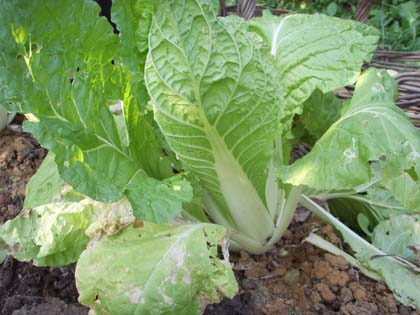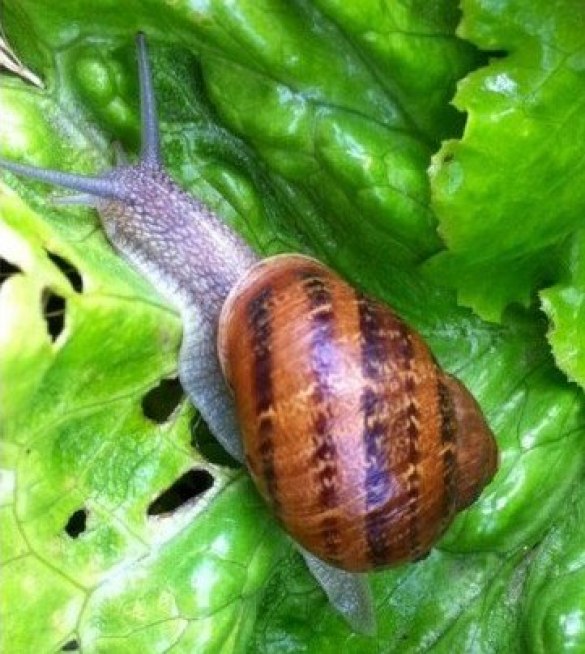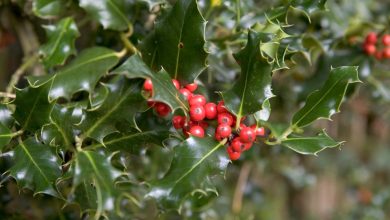Lettuces: bitten leaves, lettuce bugs and other problems

Another article in Agrohuerto to tell you some details of the pests and diseases that can affect our garden crops, in this case lettuce.
As we saw in the post How to grow lettuce in the organic garden, this leafy vegetable is quite easy to grow and does not require much care, so let’s not let a pest spoil our lettuce by not paying attention to it! Next we are going to see the main problems and the symptoms that can appear when they are affected by pests or diseases.
Lettuces with torn leaves or holes
If you find the leaves of the lettuce with large rounded holes, probably what will have attacked your plants are snails or slugs. Many times you can also see the traces of mucous or «drool» that they leave behind when moving, so if you see these marks you can be practically sure that they are the ones eating the lettuce.

These mollusks are typical inhabitants of the garden, and they usually come out of their shelters at night or on cloudy days, when the environment is warm and humid. So if you see that they can be a pest, try to capture them at that time, or set traps such as buried cups or beer containers. Beer attracts snails and slugs, so it is normal that at night they go to the traps and the next day you find them drowned inside the containers.
Ash and mulching or padding (especially sawdust or holm oak, oak or cork oak leaves) prevent the access of snails and slugs to crops. You can see other methods to prevent this pest or to eliminate it in the post Getting rid of slugs and snails in the garden.
Lettuces with galleries in the leaves: the miners
The flies of the Liriomyza family, about 2 mm long and black and yellow in color, are leaf miners. These insects produce bites or dots on the leaves to feed or to lay eggs inside. Then the larvae grow inside, feeding on them and making very characteristic galleries (like irregular undulations all over the leaf) that later die.
They not only affect lettuce, they can also become a pest of other garden plants such as nightshades (pepper, tomato, aubergine…), spinach, Swiss chard, potatoes, melon, watermelon, etc.
To put an end to a pest of leaf miners in the orchard, chromatic traps are effective. Within the plant-based treatments, you can use Azadirachtin or some other preparation made with Neem tree oil (widely used in Organic Farming for pest control) or garlic-based remedies. There is also a parasitic wasp of this fly, called Digliphus isaea, which you can buy and release in the garden, using it as a natural enemy to keep the plague at bay.
Lettuce attacked by fungus
There are several fungi that can affect lettuce, including some mildew (such as Bremia lactucae), Botrytis or gray rot (Botritis cinerea) or white rot.
We already talked about Mildew and Botrytis in the entry Mushrooms in the garden: Powdery Mildew, Mildew, Rust and Botrytis, so you can take a look at that post to see what the symptoms of these diseases are.

As for white rot (caused by Sclerotinia spp. or Whetzelina sclerotiorum), the symptoms in lettuce are the crushing of the leaves against the ground and the appearance of a white, silky-looking mycelium on the underside.
In the entry Prevention and ecological treatments for fungi in the garden you can find the most effective ways to prevent fungi or to treat diseases if they have already appeared. These three natural remedies are also very effective and will help you prevent and eliminate them.
Viruses in lettuce
If yellow spots appear on lettuce leaves, they may be caused by viruses such as Lettuce Mosaic Virus (IMV) or Tomato Spotted Scorch Virus (TSWV).
Check if this is the problem and, if so, pull up the lettuce as soon as possible because there is no possible treatment for viruses and other plants could also be infected.
Other lettuce pests
Lettuce can also be affected by polyphagous pests such as aphids or whiteflies. Since we have already talked a lot about these pests that are so common in the garden, I will not dwell on them. If you want to know about preventive actions or ecological methods to eliminate them, you can consult the posts in the “Pests and diseases” category.
References
- Romanazzi, C., Feliziani, E. (2014).Chapter 4 – Botrytis cinerea (Gray Mold). Editor(s): Silvia Bautista-Baños, Postharvest Decay, Academic Press,131-146.
- Koite, S. Y.; Gladders, P., Paulus, AO (2007).Vegetable diseases. Academic Press. San Diego.
- Li J, Liu X, Yang X, Li Y, Dexian C (2018).Proteomic analysis of the impacts of powdery mildew on wheat grain. Food Chemistry, 261, 30-35.
I hope I have helped you learn a little more about the problems that can arise when you grow lettuce in the garden
All the best!



![Photo of Vegetables: [Concept, Types, Classification and Examples]](https://www.complete-gardening.com/wp-content/uploads/2022/08/vegetables-concept-types-classification-and-examples-390x220.jpg)
